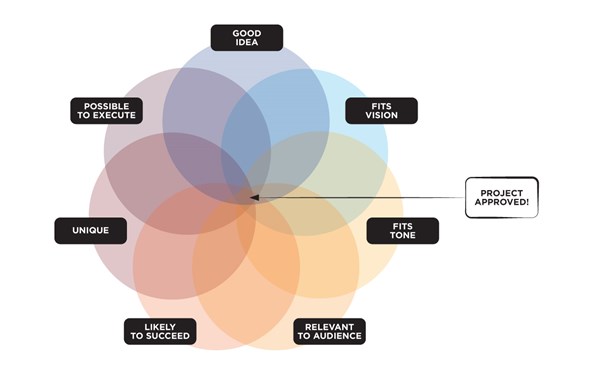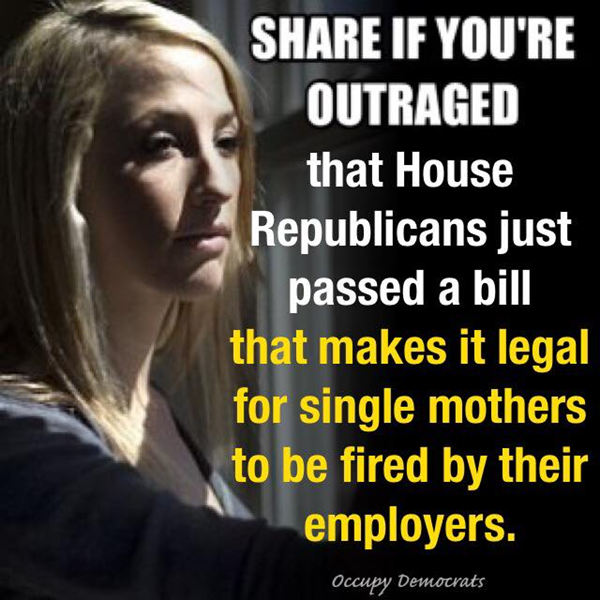Deciding which creative projects to attempt is an incredibly difficult job, both as an artist and as any kind of executive producer.
We live in a world of infinite creative ideas but painfully finite resources. Each of us has a limited set of resources and skills, goals and values, and most importantly a limited amount of time with which to create, so it will never be possible to pursue every idea we have, no matter how good it seems on the surface.
In my estimation, there are no fewer than 7 specific criteria that must all align before a project makes sense, and each of these is variable and carries different weight on the decision.

First, as obvious as it might seem, we must start with a genuinely (1) Good Idea that can translate well to the chosen medium (video, audio, design, etc.).
Ideas are easy to come by, but frequently (especially in the non-profit world), they aren’t workable or interesting when turned into videos. Over the past 15 years that I've been producing original creative content, I've generated and/or been pitched several hundred different concepts, but very few of those were actually good for the intended medium.
Visual (and auditory) storytelling is different than writing an article, a white paper, or a book, and writing for video is a special skill that takes thinking beyond abstract concepts or dialogue, so finding an idea that actually makes sense for the medium is not easy—especially in an environment dominated by left-brained, systemizing thinkers such as economists, philosophers, and political scientists.
But beyond merely having a Good Idea, these ideas must (2) Fit Brand’s Vision, and they must (3) Fit Brand’s Tone.
The tone we want to cultivate at FEE is “optimistic, empowering, dynamic, morally principled, credible, and collaborative.”
For example, FEE is a 72-year-old institution with the crucial mission of advancing a free society, so producing any good idea still isn't enough. It must be an idea that actually advances our vision of a free society in some meaningful way.
In addition, because FEE is an organization that caters to parents, young students, and the general public; because it has donors to attract and keep; and because we have a long-standing legacy to uphold, we must also be very careful about the tone we present to our audiences.
The tone we want to cultivate at FEE is “optimistic, empowering, dynamic, morally principled, credible, and collaborative.”
This is can be a tough needle to thread when we also want to dominate social media as an organization. It’s no secret that much of the most shareable content online is pessimistic or angry, sarcastic, insulting, tribal, and deceptive. In general, if you can get someone to feel outraged or present them with content that provides a new reason to hate an enemy or pat themselves on the back, you’re probably going to get them to click on your content and possibly share it with their friends.
For example, there are is no shortage of content online like this:


Note that in both of these cases, the content is designed to pit one group of people against another and relies on a sense of outrage or anger to connect with its intended audiences. My view is that while this is quite often the easiest path to success online, it is also frequently unethical and probably damaging to society in general.
But more importantly, from the standpoint of project selection at an organization like FEE, "good ideas" that are mean-spirited, inappropriate, fail to honor donor intent, which violate 501(c)3 rules, or fail to comply with the law in some other way simply must be rejected.
From there, once we have a Good Idea that Fits FEE's Vision and Tone, I begin asking questions about the idea as a matter of strategy. Is the idea (4) Relevant to an Audience that we're trying to reach? Is it actually (5) Likely to Succeed given all that we currently know about what's trending, what topics or styles are popular, and what kinds of stories people, in general, seem to respond to? Is it (6) Unique, both to FEE (ie. do we have overlapping projects happening simultaneously?) and to the market at large (ie. is someone else doing this already?) and thus unnecessary?
This means we have serious limitations both with regards to time and to overall capabilities.
Last, but perhaps most importantly of all, we have to be realistic and ask whether this idea is actually (7) Possible to Execute.
Like many other organizations in our network, FEE has an incredibly small production team—just 3 full-time staff members and a handful of independent editors and producers who work on specific projects.
This means we have serious limitations both with regards to time and to overall capabilities.
While I like to think that we have built a strong unit, quality media production is still an incredibly difficult and complex process that requires a variety of skill sets from understanding and internalizing aesthetic ideas like story, design, composition, framing, rhythm/pacing, etc. to hard skills like using cameras, lights, editing & visual effects software, and other technology. We also have a budget significantly under those found in the broader media industry, and yet a core goal of the YEAR project requires us to be able to produce a wide variety and large quantity of content, so we need to make all of our resources go as far as we can.
Another, often underrated, aspect of assessing whether or not a project is truly "possible" is how passionate the creative team that will actually work on it is about the idea. Our now award-winning documentary series, "How We Thrive" is successful partly because the director/producer team contracted to shoot and edit those films went into the project with a strong passion for telling stories about female entrerpeneurs. That passion inspires them to work harder, pay closer attention to the fine details, and care enough to get every aspect of the film right.
Regardless of their professionalism or talent, pairing that same team with a project they weren't passionate about would not create the same results and that fact plays into project selection. Even when a project is technically possible, a lack of creative inspiration can be even more destructive than a low budget or tight schedule.
After taking into consideration all these criteria, we end up with a pretty narrow set of projects that are truly viable.
After taking into consideration all these criteria, we end up with a pretty narrow set of projects that are truly viable and a lot of projects that might seem like good ideas on the surface but are out of reach. There are a lot of tough choices that need to be made in that regard, based on our judgment of what's feasible.
These seven steps are essential to making effective production decisions and if well-understood can help organizations and individuals create their best possible creative work.
FEE has been a leading non-profit organization in teaching the principles of a free society since its founding in 1946 by Leonard E. Read. Today, FEE focuses on introducing freedom as a life philosophy to young newcomers, striving to bring about a world in which the economic, ethical, and legal principles of a free society are familiar, credible, and compelling to the next generation. FEE produces the annual FEEcon event, student seminars, free online courses, classroom resources, and engaging classic and contemporary content available at FEE.org and on social media. FEE is supported solely by contributions from individuals, private foundations, and businesses and by the sale of our publications. We invite you to advance liberty with us at FEE.org.
The John Templeton Foundation serves as a philanthropic catalyst for discoveries relating to the Big Questions of human purpose and ultimate reality. We support research on subjects ranging from complexity, evolution, and infinity to creativity, forgiveness, love, and free will. We encourage civil, informed dialogue among scientists, philosophers, and theologians and between such experts and the public at large, for the purposes of definitional clarity and new insights. The Foundation’s vision is derived from the late Sir John Templeton's optimism about the possibility of acquiring “new spiritual information” and from his commitment to rigorous scientific research and related scholarship. The Foundation's motto, "How little we know, how eager to learn," exemplifies our support for open-minded inquiry and our hope for advancing human progress through breakthrough discoveries.

